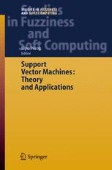Search
Search Results
-
Data Mining and User Profiling for an E-Commerce System
Many companies are now develo** an online internet presence to sell or promote their products and services. The data generated by e-commerce sites...
-
Discovery of Fuzzy Multiple-Level Web Browsing Patterns
Web usage mining is the application of data mining techniques to discover usage patterns from web data. It can be used to better understand web usage...
-
Comparison Between Five Classifiers for Automatic Scoring of Human Sleep Recordings
The aim of this work is to compare the performances of 5 classifiers (linear and quadratic classifiers, k nearest neighbors, Parzen kernels and...
-
A Probabilistic Approach to Mining Fuzzy Frequent Patterns
Deriving association rules is a typical task in data mining. The problem was originally defined for transactions of discrete items, but it was soon...
-
4. Stability of Nonlinear Switched and Impulsive Systems
In this chapter, we shall study the stability of nonlinear switched and impulsive systems of the form...
-
Measuring User Satisfaction in Web Searching
Search engines are among the most popular as well as useful services on the web. But the problem we face is due to the large number of search engines...
-
A Fuzzy Method for Learning Simple Boolean Formulas from Examples
We discuss a method for inferring Boolean functions from examples. The method is inherently fuzzy in two respects: i) we work with a pair of formulas...
-
Kernel Discriminant Learning with Application to Face Recognition
When applied to high-dimensional pattern classification tasks such as face recognition, traditional kernel discriminant analysis methods often suffer...
-
Multiple Model Estimation for Nonlinear Classification
This chapter describes a new method for nonlinear classification using a collection of several simple (linear) classifiers. The approach is based on...
-
Active Support Vector Learning with Statistical Queries
The article describes an active learning strategy to solve the large quadratic programming (QP) problem of support vector machine (SVM) design in...
-
Sequential Pattern Mining*
Sequential pattern discovery has emerged as an important research topic in knowledge discovery and data mining with broad applications. Previous...
-
Uncertain Knowledge Association Through Information Gain
The problem of entity association is at the core of information mining techniques. In this work we propose an approach that links the similarity of...
-
Soft Computing Paradigms for Web Access Pattern Analysis
Web servers play a crucial role to convey knowledge and information to the end users. With the popularity of the WWW, discovering the hidden...
-
Ontology-based Fuzzy Decision Agent and Its Application to Meeting Scheduling Support System
A Fuzzy Decision Agent (FDA) based on personal ontology for Meeting Scheduling Support System (MSSS) is proposed in this chapter. In this system,...
-
D-GridMST: Clustering Large Distributed Spatial Databases
In this paper, we will propose a novel distributable clustering algorithm, called Distributed-GridMST (D–GridMST for short), which deals with large...
-
Data Mining of Missing Persons Data
This paper presents the results of analysis to evaluate the effectiveness of data mining techniques to predict the outcome for missing persons cases....
-
1. Examples and Modelling of Switched and Impulsive Systems
When you begin to read this book, you may ask: “what is a switched and impulsive system?” This is a question that may be best answered through...
-
Fast Color Texture-Based Object Detection in Images: Application to License Plate Localization
The current chapter presents a color texture-based method for object detection in images. A support vector machine (SVM) is used to classify each...
-
Gas Sensing Using Support Vector Machines
In this chapter we deal with the use of Support Vector Machines in gas sensing. After a brief introduction to the inner workings of multisensor...
-
Support Vector Machines – An Introduction
This is a book about learning from empirical data (i.e., examples, samples, measurements, records, patterns or observations) by applying support...
